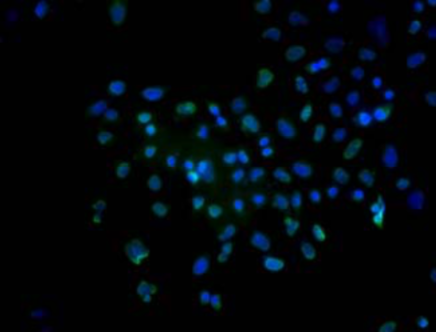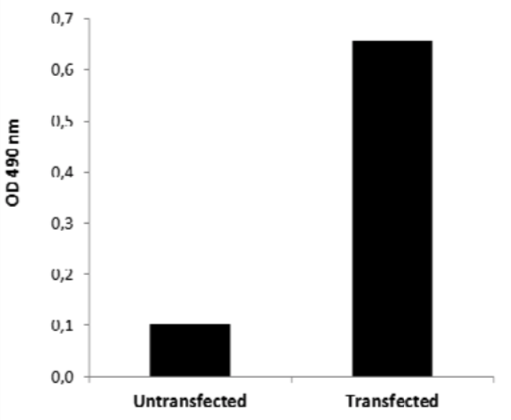 CAC Antibody Collection
CAC Antibody Collection
The antibodies on this page are part of Cosmo Bio's exclusive CAC Collection. For many many thousands of other antibodies from many different makers, use our Search the Store function and our Explore Products drop down menu.
Oxidative stress reflects an imbalance between the systemic manifestation of reactive oxygen species and a biological system's ability to readily detoxify the reactive intermediates or to repair the resulting damage. Disturbances in the normal redox state of cells can cause toxic effects through the production of peroxides and free radicals that damage all components of the cell, including proteins, lipids, and DNA. Oxidative stress from oxidative metabolism causes base damage, as well as strand breaks in DNA. Base damage is mostly indirect and caused by reactive oxygen species (ROS) generated, e.g. O2− (superoxide radical), OH (hydroxyl radical) and H2O2 (hydrogen peroxide). Further, some reactive oxidative species act as cellular messengers in redox signaling. Thus, oxidative stress can cause disruptions in normal mechanisms of cellular signaling.
In humans, oxidative stress is thought to be involved in the development of ADHD, cancer, Parkinson's disease, Lafora disease, Alzheimer's disease, atherosclerosis, heart failure, myocardial infarction, fragile X syndrome, sickle-cell disease, lichen planus, vitiligo, autism, infection, chronic fatigue syndrome, and depression and seems to be characteristic of individuals with Asperger syndrome. However, reactive oxygen species can be beneficial, as they are used by the immune system as a way to attack and kill pathogens. Short-term oxidative stress may also be important in prevention of aging by induction of a process named mitohormesis. [from: Wikipedia contributors. (2019, June 3). Oxidative stress. In Wikipedia, The Free Encyclopedia. Retrieved 16:29, June 5, 2019, from https://en.wikipedia.org/w/index.php?title=Oxidative_stress&oldid=900145485]
In humans, oxidative stress is thought to be involved in the development of ADHD, cancer, Parkinson's disease, Lafora disease, Alzheimer's disease, atherosclerosis, heart failure, myocardial infarction, fragile X syndrome, sickle-cell disease, lichen planus, vitiligo, autism, infection, chronic fatigue syndrome, and depression and seems to be characteristic of individuals with Asperger syndrome. However, reactive oxygen species can be beneficial, as they are used by the immune system as a way to attack and kill pathogens. Short-term oxidative stress may also be important in prevention of aging by induction of a process named mitohormesis. [from: Wikipedia contributors. (2019, June 3). Oxidative stress. In Wikipedia, The Free Encyclopedia. Retrieved 16:29, June 5, 2019, from https://en.wikipedia.org/w/index.php?title=Oxidative_stress&oldid=900145485]
| Product name (click for order info) | Cat No (click for datasheet) |
Host | Species specificity |
| Anti Peroxiredoxin-4 (PRDX) pAb (Mouse, Antiserum) | CAC-ICA-TG6-MSP1 | MS | MS |
| Product name | Anti Peroxiredoxin-4 (PRDX) pAb (Mouse, Antiserum) |
| Cat No | CAC-ICA-TG6-MSP1 |
| Description | Peroxiredoxin-4 is an antioxidant enzyme and belongs to the peroxiredoxin family. The protein is localized to the cytoplasm. Peroxidases of the peroxiredoxin family reduce hydrogen peroxide and alkyl hydroperoxides to water and alcohol with the use of reducing equivalents derived from thiol-containing donor molecules. This protein has been found to play a regulatory role in the activation of the transcription factor NF-kappaB. |
| Host | MS |
| Species specificity | MS |
| Figure 1 |  |
| Immunohistochemistry. Hela cells ICAFectin441®-transfected with a plasmid encoding mouse PRDX4 were fixed 24h post transfection, permeabilized and stained with mouse anti-mouse PRDX4 polyclonal antibody diluted 1/20 and Alexa488 goat anti mouse IgG secondary antibody diluted 1/1000. Nuclei were counterstained with DAPI (blue). | |
| Figure 2 |  |
| Flow cytometry. Hela cells untransfected (black) and ICAFectin®441-transfected with a plasmid encoding mouse PRDX4 (red) were fixed 24 hours post transfection, permeabilized and stained with mouse anti-mouse PRDX4 polyclonal antibody diluted 1/100 and R-PE goat anti mouse IgG secondary antibody diluted 1/200. | |
| Figure 3 |  |
| ELISA. Lysates of HeLa cells untransfected and ICAFectin®441-transfected with a plasmid encoding mouse PRDX4 were coated on MaxiSorp plates (Nunc) in bicarbonate buffer. Plates were treated with anti-mouse PRDX4 polyclonal antibody followed by HRP goat anti mouse IgG secondary antibody diluted 1/5000. |
